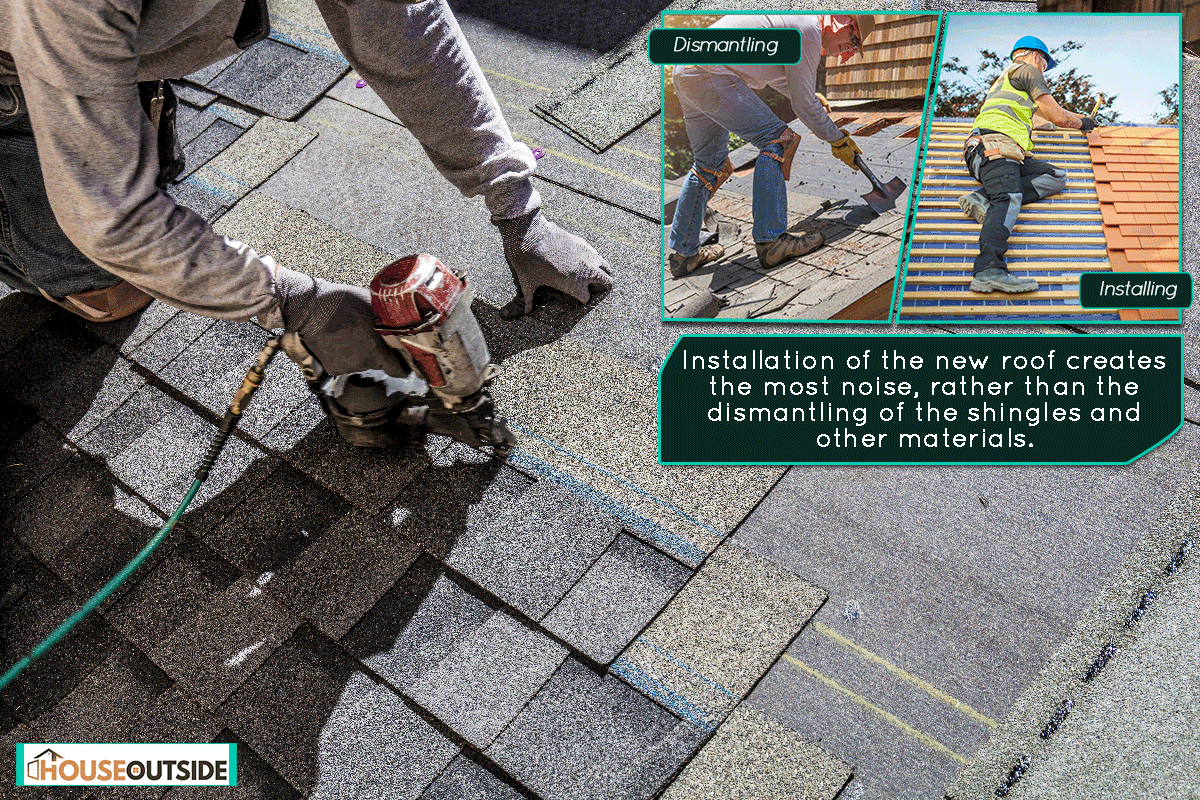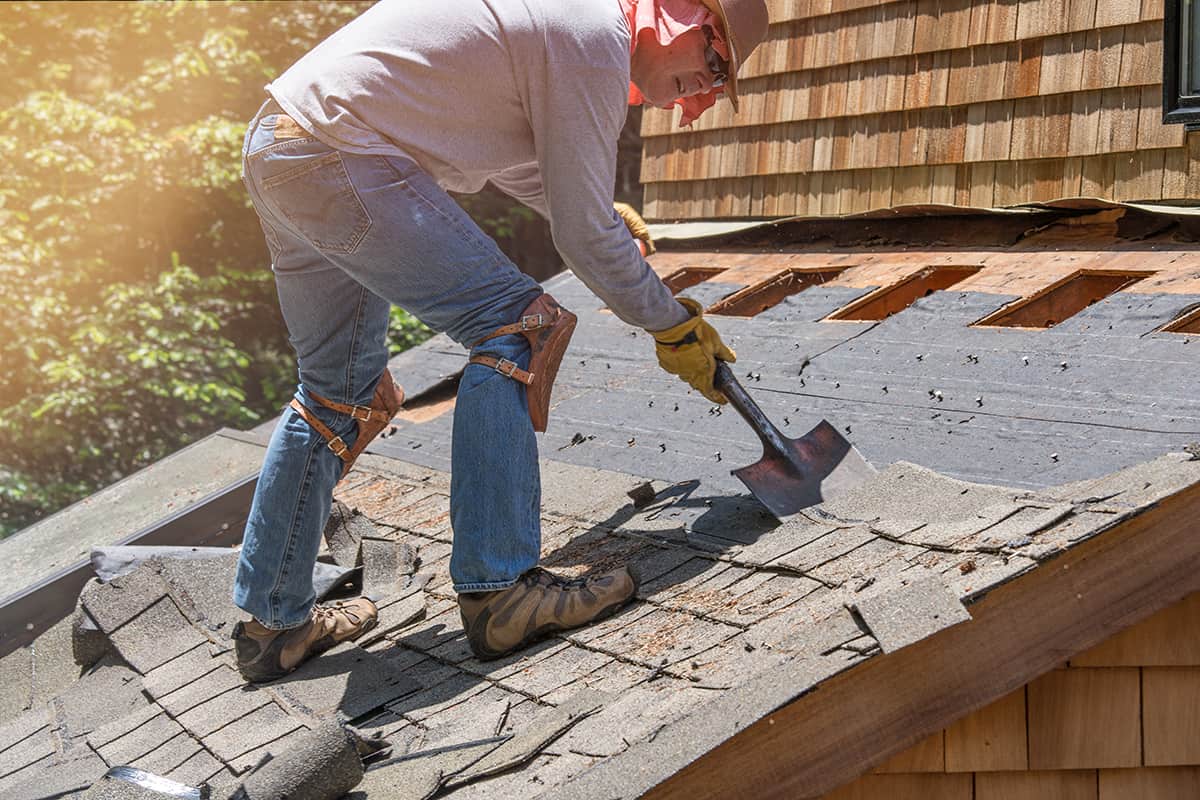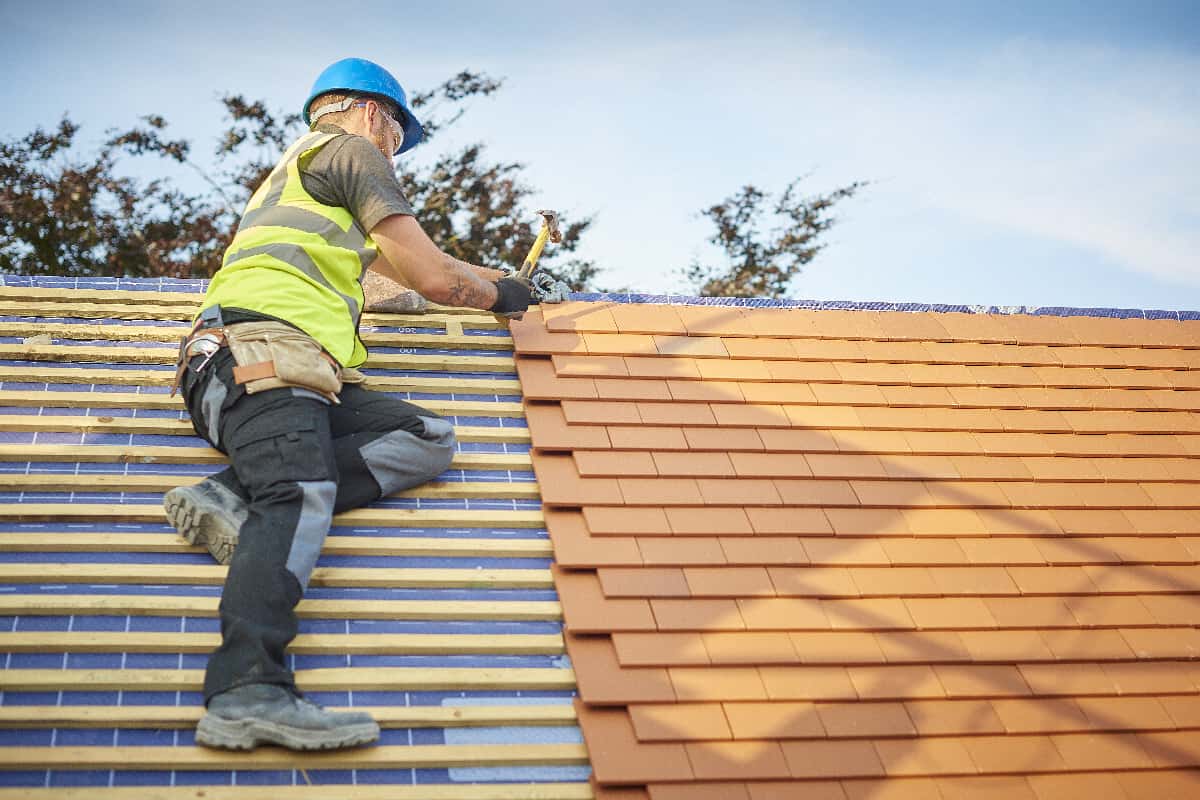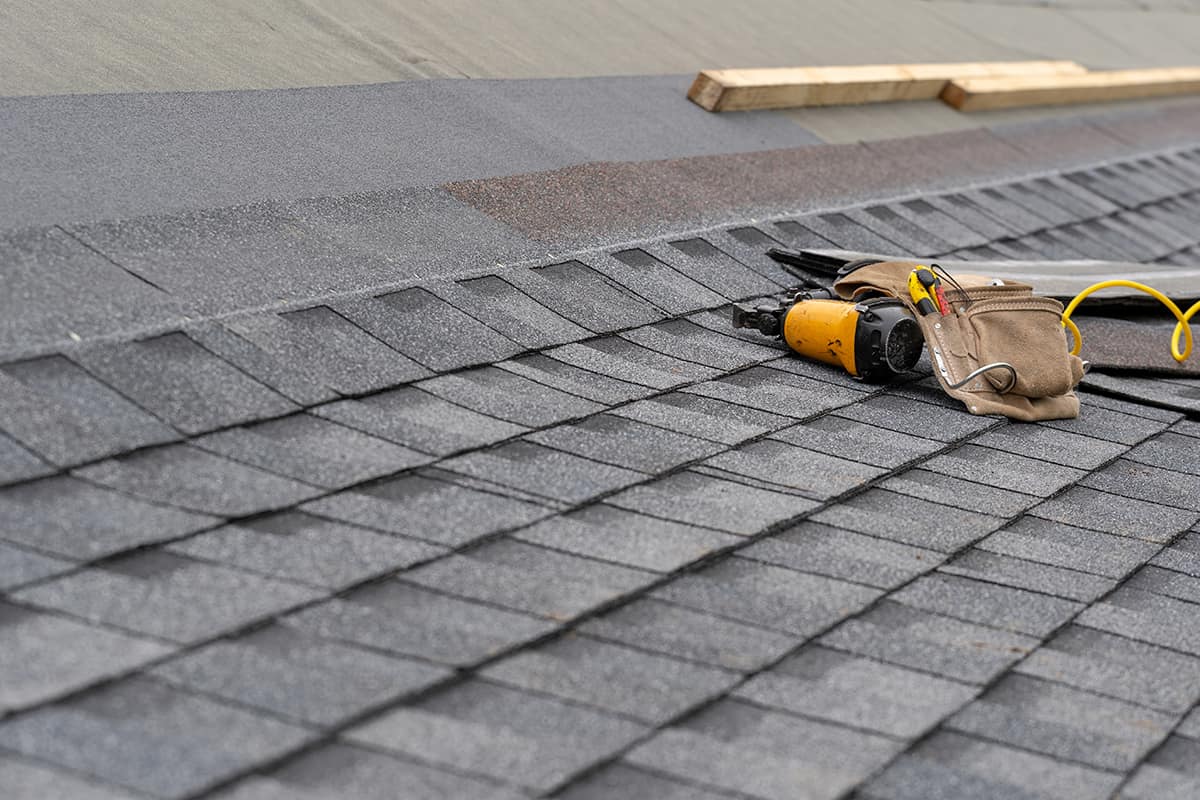You probably already know that roof replacement involves a lot of noise. And you are also probably here to know which part of the process is the loudest. You are in the right place! We've researched this through experienced professionals and homeowners, and here is what we found out:
The loudest part of roof replacement is the first steps and installation process. However, compared to the two, the installation of the new roof creates the most noise rather than the dismantling of the shingles, tiles, and other materials that have to be removed beforehand.
Want to know what they are doing which makes the replacement noisy? Do not worry! We will talk about those in a while. The other important points related to this that may concern you are available here too. So keep reading!

What Makes the Roof Replacement Loud?
If you have experienced being the neighbor of someone who is having their roof replaced, you must have an idea how loud it could be. The contractors' voices, the sound of the working tools, the echo of the pounding of nails, etc.

You will lose concentration if you are sensitive to such noises and get disturbed by what you are doing. So now, we will talk about what is happening during those moments.
As mentioned above, the first steps and installation of the roof replacement process are what will disrupt the silence and steal the peace throughout your home and the surroundings.
First Steps Of Roof Replacement
That initial step is the dismantling or removal of the roof materials. This involves the prying of the shingles and metal panels and removing fasteners that hold the roof in place, which means drilling or unscrewing and pulling them out.

Aside from these, the flashing and the underlayment can be aged or damaged too. This means they will be removed and replaced also. The movement of these roofing materials creates loud noise during the initial phase of roof replacement.
These are most likely the sound of crumpling steel or aluminum or shuttering of asphalt shingles which can be really unpleasant for the ears. This especially holds if you have a large roof area. The bigger the roof is, the longer the noise of the removal of materials will be.
Another loud and noisy part is during the disposal of the dismantled roof materials. Squeezing and deforming the materials to make them fit into the garbage bin will produce an extra clattering sound.
It is also worth mentioning that a metal roof makes more noise. Metal produces pronounced noise when it is directly hit. Compared to asphalt shingles, metal roofs are 50 decibels louder. You can readily notice the noise of the metal roofing during a heavy downpour.
Installation Of Roof Replacement
The constant movement of the positioning of new materials, hammering nails, and drilling screws are the reasons why installing the new roof is louder than removing the old one.

You will hear the scraping of metal sheets when they are layered flat on the roof's surface or the banging of the nail gun to secure them in place. Also, the thuds from accidental dropping of tools or roof materials and the movement of the roofers in their boots.
If there are more parts removed, such as the flashing and underlayment, their replacement will also prolong the noisy process. Not to mention the repairs of gaps and holes on the roof.
Want to learn more about roof replacement? Read this: What Is Included In Roof Replacement?
How Do I Prepare For Roof Replacement?
There are a few pointers before you have your roof replaced. This will ensure the safety of everyone and everything inside and outside of your home during the process. Also, it will minimize any damage or harm that may occur.
For example, the hammering of nails causes sound vibrations that travel through the walls. Or the force being directed to the nails may affect the movement of the wall's surface with every hit. So, here are some precautions you should consider.
Inside the house:
- Remove all objects that are attached to your wall. Especially those that can break, such as glass frames and mirrors. If you have figurines on your floating shelves, set them aside in a low, safe area.
- Cover the furniture in your attic and the windows to prevent debris from hammering and pounding on the roof.
- Put barriers in accident-prone areas in your home during the replacement so that everyone will avoid those places.
Outside the house:
- Park your vehicle away from the working area.
- Remove devices in your yard that may become a hindrance during work. This includes cutting down tree branches along the roof and temporarily removing the antennas or dishes.
- Inform your neighbors about the scheduled roof replacement. That way, they will be aware of the noise that will occur from it during that time and day.
- Asphalt shingle - 1 to 2 days
- Concrete tile - 8 to 9 days
- Steel sheet - 3 to 4 days
- Wood shakes - 3 to 4 days
- Flat roof - 2 to 3 days
How Long Does It Take To Have a Roof Replaced?
The roof replacement can last a few hours to even nine days, depending on the project's complexity. Other factors that affect this project timeline are the weather, roof area, roof accessibility, severity of the damage, type of material and method used, and other similar factors.
To give you an overview of how long it may take to replace a roof, here's a list according to the material:
What Time Of Year Is Best To Replace A Roof?
The best time to have your roof replaced is during the fall season. This season affords the ideal temperature to have the job done. Imagine doing the project during winter when your roof is too dangerous to climb due to the thick layer of snow and frost.
Listen up! People who plan to get theirs done are searching for this too. So, you should get an appointment with the contractor before they get fully booked!
What Is The Best Roof To Get?

The most popular choice is asphalt shingles. This is because of its cost-effectiveness, availability of different design and style variations, good performance, and ease of installation. Other benefits of an asphalt shingle are the following.
- Long-lasting (15 to 30 years).
- Requires low maintenance
- Readily available in the market
- Not prone to leaks
- Does not need ice stops
Are your gathering rainwater? Find out if you can collect them from your asphalt roof here: Can You Collect Rainwater From Asphalt Roof?
Should I Stay Home During The Roof Replacement?
It depends on you if you want to stay in your home or not. But remember that once the construction begins, your home is a hazardous area and no longer safe. Plus, the noise can be stressful to people who are sensitive to it, even your pets.
However, if you can make sure to take precautionary measures and do not mind the loud sounds, staying home is a good choice too. It lets you monitor the work and people in your home and save money from renting out a place or eating outside during the whole project.
Do Roofers Need To Come Inside The House?

Roofers might only go inside your home for two reasons: pre-inspection of your roof and if some leaks and damages need to address. Other than these, they do not need to come inside.
Some companies even prohibit the roofers from asking to use the homeowner's bathroom during the scope of replacement.
Conclusion
Roof replacement is loud from the removal of the old roof to installing the new one. However, between the two, the installation process is noisier. So if you are sensitive to that kind or level of sound, stay out of your home during the construction.
Asphalt shingle is the best roofing material for most homeowners because of its many benefits for a cheap price and only takes about a day or two to install.
Plan to set an appointment during the fall season, for it is the best time to have the project done. You can expect to enjoy and be safe and warm under your newly replaced roof before winter.



